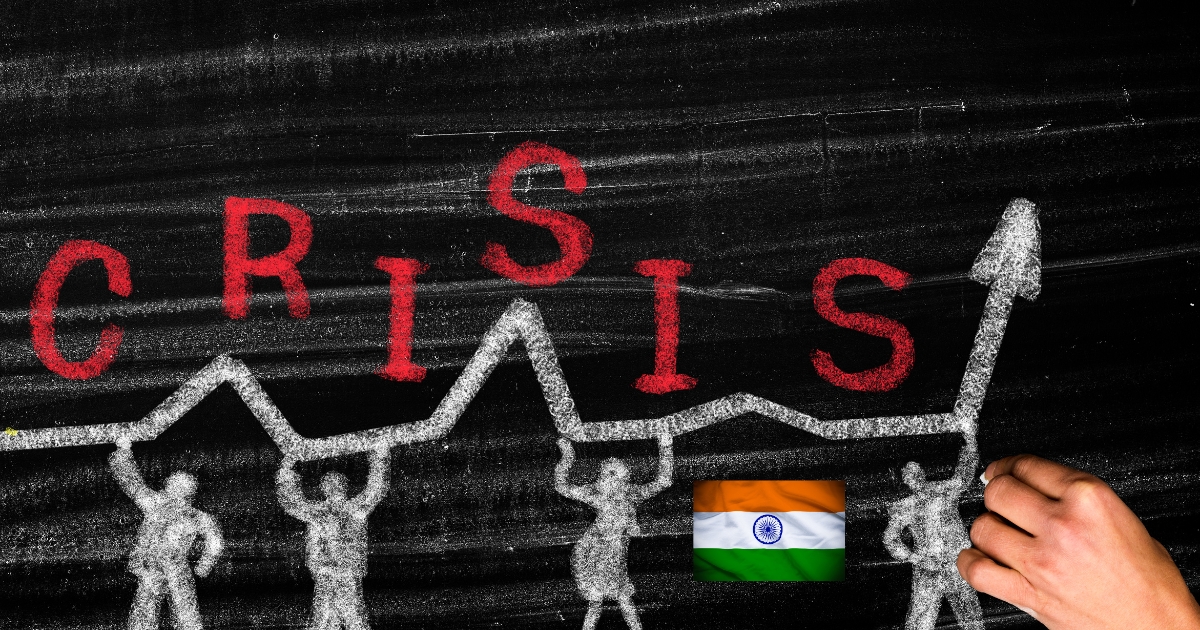Hi everyone! Let’s go specific about India’s recent decision to halt exports of several kinds of rice. Imagine this: in July 2023, India decided to stop exporting non-basmati white rice, a specific variety of rice. Yes, you did hear correctly. That one, which accounted for around 20% of the total rice they exported in 2022, was closed abruptly. Well, but that’s not all. They also said, “Nah-ah!” to exporting broken rice, which accounted for roughly 8% of their total exports in September 2022. Unbelievable, huh?
However, India isn’t giving up on exports entirely. Both basmati and non-basmati parboiled rice can still fly and travel to new places. These two champions account for around 70% of India’s total rice exports.
Why are they acting in this way now? Stay put, and I’ll fill you in on everything. However, one thing is sure: the key is maintaining stability at home and ensuring enough rice for everyone in India, particularly the 800 million people who depend on the inexpensive variety. Furthermore, given the global surge in rice prices, India must prioritize its own needs.
So fasten your seatbelts because we will reveal how these export prohibitions are causing a stir in the rice industry in India and globally. All set? Come on, let’s go!
Table of Contents
ToggleBackground
Now that we’ve taken a step back let’s learn more about what India is doing with these export limits on rice. Now imagine this: India is the global rice superpower, exporting quantities of grain to all corners of the globe. However, in September 2022, they stopped exporting broken rice, which accounted for roughly 8% of their total rice exports the previous year. Additionally, they rejected non-basmati white rice, which accounted for a staggering 20% of their exports in 2022, only last July. Crazy, huh?
Hold on, they’re not ending the export industry. Oh no! Roughly 70% of India’s rice exports are basmati and non-basmati parboiled rice, which are still allowed on the market.
Why are they acting in this way now? So stay put because we’re going to solve the puzzle. However, one thing is certain: the key is to maintain stability at home, ensuring enough rice for everyone in India, particularly the 800 million people who depend on the inexpensive variety. Furthermore, given the global surge in rice prices, India must prioritize its own needs.
So fasten your seatbelts because we will reveal how these export prohibitions are causing a stir in the rice industry in India and globally. All set? Come on, let’s go! Let’s take a closer look at the history to see why India is halting its rice exports.
There you have it, then! Let’s now lift the veil and examine the factors that led India to impose these limitations.
Reasons for the Export Bans
Now that we’ve covered the essential groundwork, let’s see why India is stopping its rice exports. We recently discovered that two primary participants in India’s export market, broken rice and non-basmati white rice, can no longer be exported. However, why? It’s all about keeping the domestic fires going and ensuring enough rice for everyone in India, particularly the 800 million people who depend on the inexpensive grain. Furthermore, given the recent global surge in rice prices, India needs to put its food security first.
Hey, things aren’t all bad. India hopes to ensure no one goes hungry by enforcing these limitations and stabilizing domestic prices. Yes, it’s creating a stir in the world’s rice trade, but sometimes, you must make difficult choices to benefit society.
So fasten your seatbelts because we will reveal how these export prohibitions are causing a stir in the rice industry in India and globally. All set? Come on, let’s go! Let’s take a closer look at the history to see why India is halting its rice exports.
There you have it, then! Now that we know the insider reason behind India’s rice export halt, let’s examine how this impacts local and international markets.
Impact on Domestic and Global Markets
Now, everyone, let’s get our hands dirty and investigate how these export restrictions affect the rice industry. It has just come to our attention that India is banning the export of broken rice and non-basmati white rice, two major export commodities. But what are the consequences? Well, it’s making a big deal, both here and internationally. The world has less rice because India keeps more of it for itself. This indicates that costs are rising and shortages are imminent, particularly in developing nations where Indian rice is a staple food.
Hey, things aren’t all bad. India wants to ensure no one goes hungry and stabilize domestic pricing by strengthening its export monopoly. Yes, it’s creating a stir in the world’s rice trade, but sometimes, you must make difficult choices to benefit society.
So fasten your seatbelts because we will reveal how these export prohibitions are causing a stir in India’s rice industry and globally. All set? Come on, let’s go! Let’s take a closer look at the history to see why India is halting its rice exports.
There you have it, then! Now that we know the insider reason behind India’s rice export halt, let’s examine how this impacts local and international markets.
Implications for Food Security
Now that we have everyone’s attention let’s examine how these export restrictions affect our food safety. As a result, broken rice and non-basmati white rice—two critical components of India’s export strategy—are becoming harder to sell. But what’s the true purpose of this whole thing? Sure, there is enough to go around right here at home, which is the primary concern. An astounding 800 million people in India depend on cheap food, and they will not go hungry. India wants to ensure that no one is left with leftover rice by keeping extra for themselves.
Hey, things aren’t all bad. India hopes to ensure no one’s stomach is growling and maintain steady domestic prices by clamping down on exports. Yes, it’s creating a little stir in the world’s rice trade, but sometimes, you must make difficult choices to benefit society.
So fasten your seatbelts because we will reveal how these export prohibitions are causing a stir in the rice industry in India and globally. All set? Come on, let’s go! Let’s take a closer look at the history to see why India is halting its rice exports.
There you have it, then! Now that we know the insider reason behind India’s rice export halt, let’s examine how this impacts local and international markets. But there’s still more! We need to discuss the political background of all this turmoil around the rice. Are you prepared for the upcoming course? Now, let’s get started!
Political Context
Now, everyone, let’s don our political caps and explore the complex reasons behind India’s decision to halt rice exports. We have recently discovered that India strictly prohibits the export of broken rice and non-basmati white rice, two major commodities in their export trade. But what’s this situation all about? Hey, it’s politics, baby, not just about rice! Food security is the queen in the chess game that the powerful in India is playing with the impending state and national elections. They hope to retain their seats at the table and win those critical votes by putting home demands ahead of international trade.
Hey, it’s not all play-acting political. India is trying to ensure that no one goes hungry and maintains stable domestic prices by making these difficult choices. Granted, it’s creating a slight agitation in the world’s rice trade, but sometimes, you must make the difficult decisions to benefit society.
Global Consequences
Now that we’ve zoomed out let’s examine the larger picture and how these export restrictions affect the world’s rice trade. We just discovered that broken rice and non-basmati white rice, two major players in their export market, are being shut out of India. But what are the consequences? Friends, it’s having a knock-on effect. There is less to go around on the international scene as India keeps more rice. This indicates that costs are skyrocketing and shortages are imminent, particularly in developing nations where Indian rice is a staple food.
Hey, things aren’t all bad. India wants to ensure no one goes hungry and stabilize domestic pricing by strengthening its export monopoly. Yes, it’s creating a stir in the world’s rice trade, but sometimes, you must make difficult choices to benefit society.
Response and Adaptation
Now that we have discussed damage control, let’s see how we plan to weather the storm these export prohibitions have produced. As a result, two major players in India’s export market—broken rice and non-basmati white rice—are no longer being exported. However, what comes next? Now is the time to put on our thinking caps and get artistic. All hands must be on deck to discover answers as costs skyrocket and shortages approach. To keep those rice bowls full, we must think beyond the box, diversify our rice supplies, and use and use creative farming practices.
Hey, it’s not just about dousing fires. By adjusting to these new realities, we can create a more robust rice trade that is capable of handling any unforeseen circumstances. Although it will require some work, nothing worthwhile ever comes quickly, isn’t that right?
And that’s it! It’s time to get our hands dirty and find out how to weather the storm now that we’ve examined the worldwide ramifications and dissected the political reasons for India’s export limits. All set to go? Now, let’s get started!
Conclusion
It’s been quite an adventure investigating India’s recent export restrictions on rice and how they’ve affected people worldwide. India has taken some difficult decisions with significant ramifications, ranging from stricter regulations on broken and non-basmati white rice to giving local food security precedence over international trade. Although these policies aim to guarantee that food is available to everyone and stabilize domestic prices, they have caused a ripple effect on the world rice market that has resulted in shortages and price increases, particularly in developing nations.
There’s always opportunity when faced with hardship. By adjusting to these novel circumstances and inventive resolutions, we can construct a more robust rice commerce capable of managing forthcoming obstacles. Therefore, as we navigate these choppy waters, let’s keep in mind that we can overcome any hurdle that comes our way if we collaborate and think creatively.
That concludes our exploration of the subject of rice exports and food security. Until next time, maintain your curiosity, resiliency, and full rice bowls. I look forward to a time when no one goes hungry, no matter where they are. Salutations!












